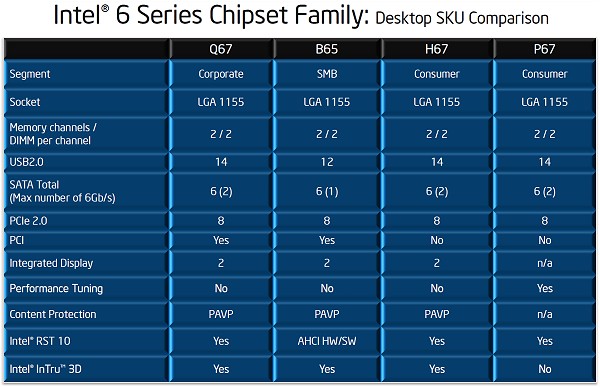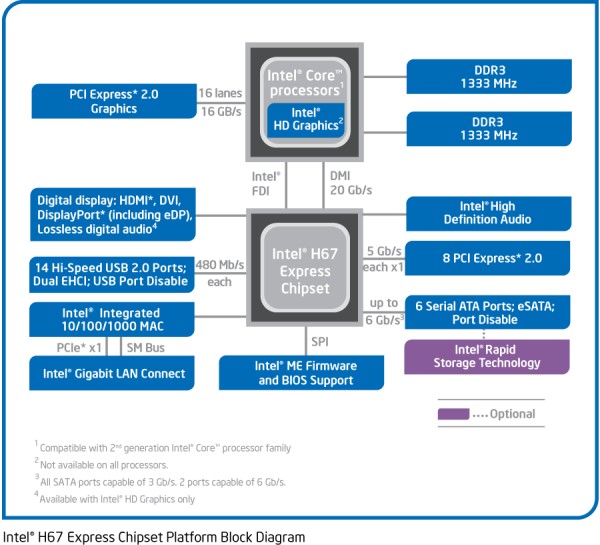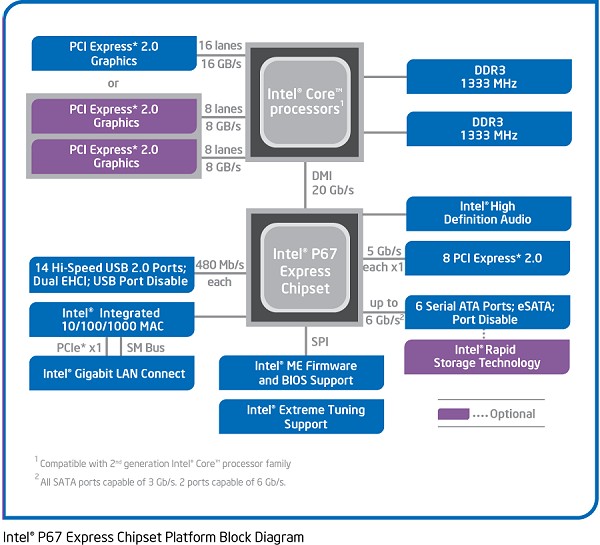Intel 6 Series Chipset Family
Current desktop Lynnfield and Clarkdale processors use the LGA1156 socket, which is supported by the Intel P55, H55, H57 and Q57 chipsets. We hate this on-going trend of complete platform replacements (kudos to AMD for avoiding this), but because the new Sandy Bridge processors use the LGA1155 socket, it means new chipset and new motherboards are required.
The new Intel chipsets include the P67, H67, B65 and Q67 which are all quite similar in terms of specifications. All chipsets offer six SATA 3Gb/s ports, while the P67, H67 and Q67 support SATA 6Gb/s using two of these ports and the B65 just one.

The P67 and H67 which you will likely become more familiar with in the near future are the consumer oriented chipsets. The B65 is aimed at the small to medium business segment and the Q67 is designed for corporate use.
All four chipsets boast eight PCI Express 2.0 lanes and fourteen USB 2.0 ports with the exception of the B65 which supports just twelve ports.

Other differences between these new chipsets have to do with the features that they support. For example, the Intel Rapid Storage Technology 10 is not supported by the B65, while it is present in the P67 and H67 chipsets.

The Content Protection technology known as Protected Audio Video Path is not supported by the P67 chipset, as it doesn't utilize the on-die graphics processor, which means it also misses out on Intel InTru 3D technology as well.